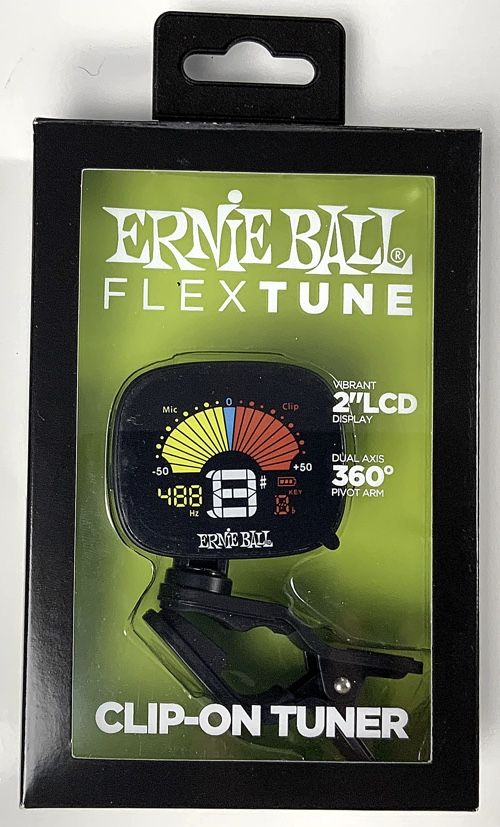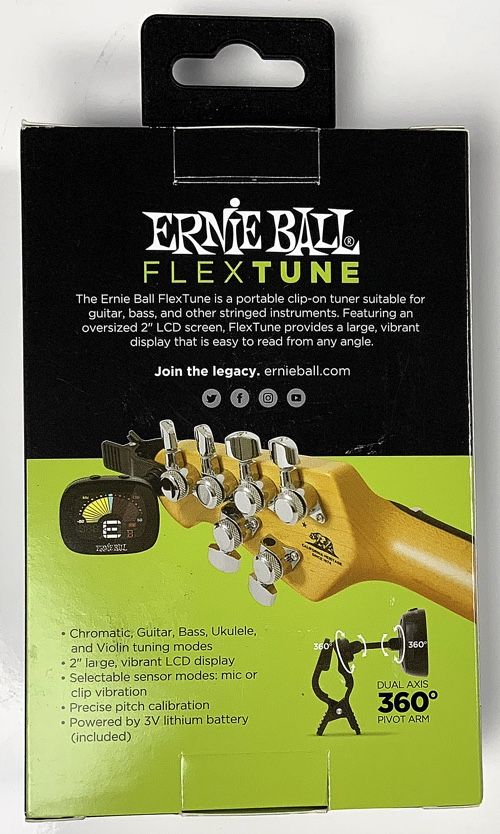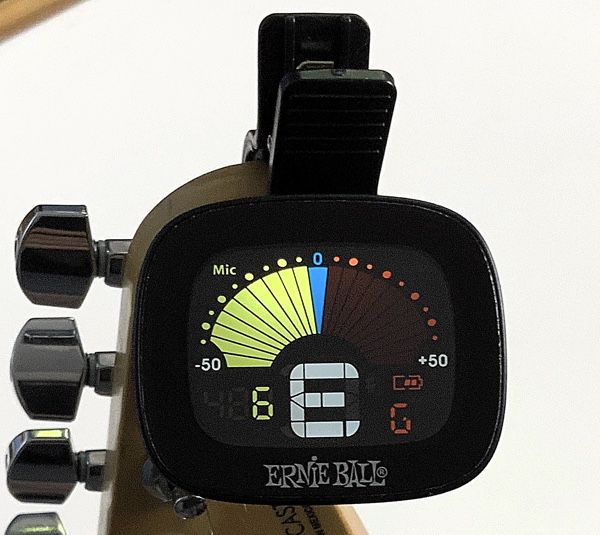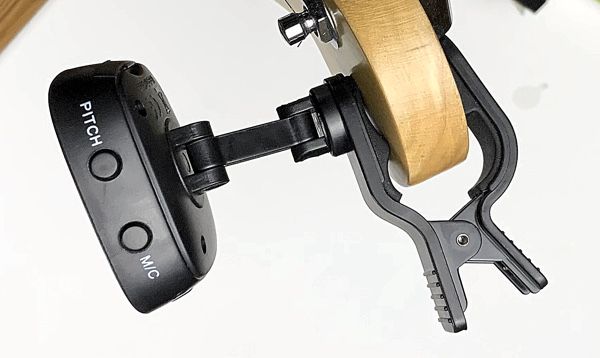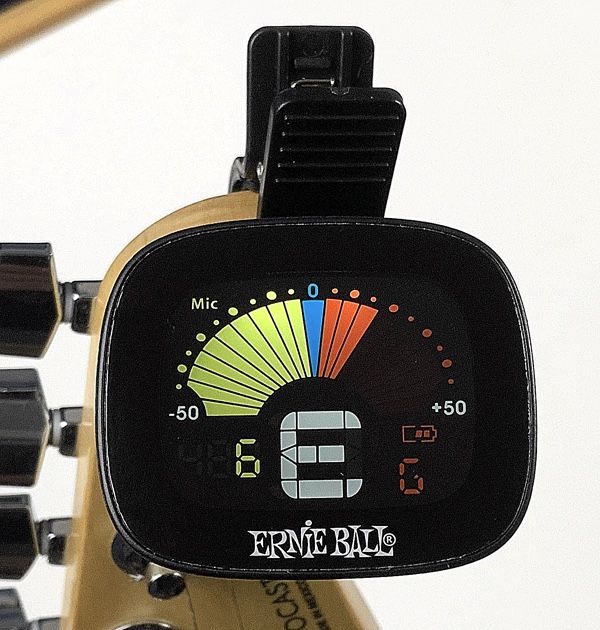I absolutely love one of my guitars (a PRS), but all of the clip-on tuners I had won’t stay clipped on it for very long because the tuner clamp mechanism can’t find enough to hold onto with that particular headstock design. So I thought I would give the Ernie Ball FlexTune Clip-On Tuner a try, and I have to sat not only does the tuner stay clamped onto my guitar, but the large display and other features make this my preferred tuner.
The notable features of this tuner are a large 2" display and a very configurable 360 degree pivot arm. Other features include chromatic, guitar, bass, ukulele, and violin tuning modes, pitch calibration, mic or clip vibration sensors, and an included 3V coin lithium battery (CR 2032). There is a plastic film between the battery and one of the terminals–to prevent discharge–that must be removed before use.
The display is beautiful–clear, and including all the information I need to get my instruments in tune. When the string is plucked the readout shows the pitch name as well as the pitch frequency–the string is in tune when the readout shows a blue center needle displayed with yellow bars to the left of it. The string is too sharp if red needles to the right of the blue center needle are displayed, and the string is too flat if only yellow bars are displayed. I’ll also note that the tuning display is more stable than some tuners I have–with some tuners the display refresh rate is so fast that the needle jumps around a lot, which to me is very distracting. This display is smoother and more stable from that standpoint. There is also a battery life indictor on the display.
A long-press of the Mode button powers the tuner on/off, and there is also a built-in timer that turns the tuner off after one minute of no activity. Pressing the Mode button briefly when the unit is on switches between the five tuning modes, with a letter on the display indicating the current mode: Chromatic (C), Guitar (G), Bass (B), Violin (V), and Ukulele (U). When the Mode is in one of the specific instrument modes, the display shows the string number of the string being plucked in addition to frequency tuning information. The pic with the Mode Button and Mic also shows the pivot arm, which allows for 360 degree rotation and configuration of the display.
On the top of the display are the pitch and mic buttons. The pitch button allows you to choose a tuning other than A4 = 440 Hz. The A4 range is 430 Hz - 450 Hz. The Mic button allows you to toggle between using the clip sensor or the internal microphone for tuning. You might use the microphone if you can’t attach the tuner to the instrument’s headstock, though the clip sensor is better used in noisy environments with the tuner clipped to the headstock.
All in all, the Ernie Ball FlexTune Clip-On Tuner is now my favorite clip-on tuner, especially since it clips onto my PRS, which defeated all previous clip-on tuners. The large display is clear and the pivot arm allows the display to be configured in most any orientation. I’ve got guitars, basses, and ukuleles, so having those tuning modes is also nice to have.
- Pricing and Availability on Amazon: Ernie Ball FlexTune Clip-On Tuner
NOTE: I am an independent product reviewer–if I don’t like the product I say so, and if I do like the product I say so. If you end up purchasing something from a link on my site, I may receive, at no additional cost to you, a small commission. Thank you for your support!
